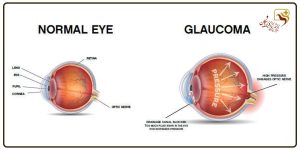بیمار نیکان عضوی از خانواده ماست

Ptosis
What is Ptosis?
Drooping of the upper eyelid is called ptosis. This drooping may be mild or involve the entire pupil.
Therefore, ptosis can limit or even completely block normal vision. Ptosis can:
- involve one or both eyes
- be hereditary
- Appear at birth
- happen at an older age
Ptosis in children
The occurrence of ptosis at birth is called congenital ptosis. If a child is born with moderate to severe ptosis, it may require immediate treatment for the development of vision. Congenital ptosis is often caused by a defect in the development of the levator muscle of the upper eyelid. Although ptosis is usually a separate disorder, in congenital cases it may be accompanied by the following disorders:
- Disturbance of eye movements
- Muscular diseases
- Eyelid tumors or other tumors
- Nervous disorders
- Refractive impairments
Congenital ptosis usually does not recover with time.
Signs and symptoms of ptosis
The most common obvious symptom of ptosis in children is drooping eyelids. In congenital ptosis, there is often asymmetry of the upper eyelid fold. Children with ptosis may have to bend their neck back to see, or their eyebrows and facial expressions may show that the child is trying to use both eyes to see. After a few years, the abnormal condition of the head may lead to disorders in turning the head.
Problems caused by ptosis in children
The most common serious disorder related to ptosis in childhood is amblyopia (lazy eye). Ptosis can cause amblyopia due to two reasons:
- Obstruction of the visual pathway in severe ptosis cases
- Causing astigmatism resulting in blurred vision
- If the child is suffering from eye deviation, this problem may remain hidden due to the presence of ptosis, leading to lazy eyes.
Treatment of congenital ptosis
In most cases, ptosis of children is treated with surgery. If a co-existing laziness is present, it may be necessary to put a cover on the healthy eye or use glasses or eye drops. The diagnosis of the need for surgery and the selection of the appropriate method are based on the following factors:
- The age of the child
- The involvement of one or both eyelids
- The severity of ptosis
- The strength of the lifting and lowering muscles of the eyelid
- The state of eye movements in early life
There is usually no need to perform surgery for mild to moderate ptosis cases. Of course, in these cases as well as severe cases that have undergone surgery, children should be regularly examined by a doctor for eye laziness, refractive impairments, and related conditions and treated if necessary.
What causes ptosis in adults?
The most common cause of ptosis in adults is stretching or separation of the tendon of the levator muscle from the eyelid. The occurrence of this problem may be due to the following reasons:
- Aging
- Following cataract surgery or other eye surgeries
- A blow to the eye
- Adult ptosis may also be a complication resulting from other diseases such as neuromuscular diseases and rare cases of inflammation or eyeball tumors that involve the levator muscle or its nerve.
Treatment of adult ptosis
The ophthalmologist provides the patient with necessary information by conducting comprehensive examinations on various treatment methods and their possible risks and complications. To diagnose the cause of ptosis and choose the best treatment method, blood tests and special radiography may be required. If an underlying cause is found, this should be treated first; however, in most cases, the final treatment is surgery, and the type of surgery is determined based on the severity of ptosis and other clinical findings.
Risks of ptosis surgery
Risks of ptosis surgery include:
- Infection
- Bleeding and;
- Vision loss.
However, the occurrence of these complications is very rare. Immediately after the operation, the eye may not close completely. This complication is usually temporary as well. During this time, eye drops and ointment can be used to protect the eyes. Although the appearance of the eyelid is significantly improved after the operation, the eyelids may not look completely symmetrical. In most cases, after surgery, the operated eyelid remains slightly open while looking down compared to the other side, though these two complications are not problematic. In rare cases, full eyelid movements cannot be reversed and sometimes more than one surgery may be required.
Ptosis in adults and children can be treated by surgery and this method can improve vision as well as correcting the appearance. In children’s ptosis, regular ophthalmological examinations in the first years of life are particularly important to prevent and treat possible eye laziness.



